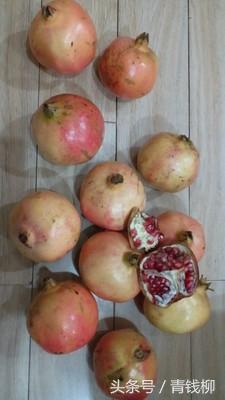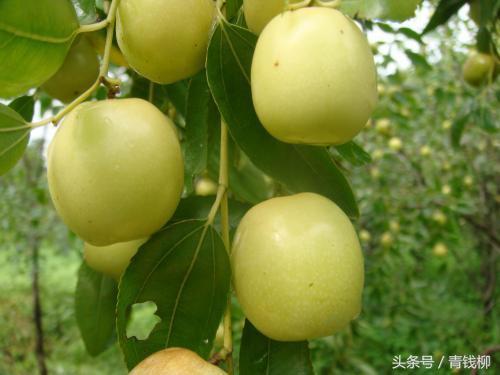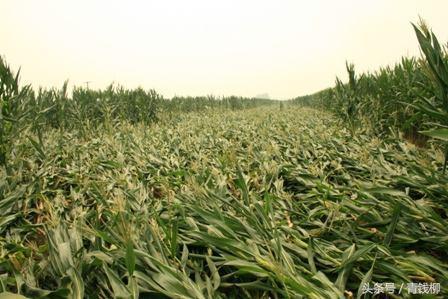Causes of Frost injury and Anti-freezing measures of soft seed Pomegranate in Western Henan Province

Causes of Frost injury and Anti-freezing measures of soft seed Pomegranate in Western Henan Province
Pomegranate is one of people's favorite fruits, which is listed as a treasure in the fruit because of its rich nutrition and beautiful meaning. In recent years, soft-seed pomegranate is regarded as one of the treasures, the market price remains high, the enthusiasm of fruit growers is high, soft-seed pomegranate develops rapidly in Lingbao City, only the planting area of soft-seed pomegranate in Hanguguan Town, Lingbao City is up to 13340 hm 2. However, because the soft-seed pomegranate is an introduced variety, young trees are not adapted to the local low temperature in winter, and the annual freezing damage rate of one-to three-year-old young trees is as high as 55%-83%. Some parks and even the whole garden cause huge losses to fruit farmers. In order to avoid more losses, the author observed and studied the freezing injury of soft seed pomegranate and put forward a set of measures to prevent frost injury, in order to provide reference for soft seed pomegranate production in Lingbao City.
1 Frost injury and its performance
The freezing injury of pomegranate refers to the harm of low temperature below freezing point to pomegranate trees. Sometimes frost injury occurs with frost, so frost injury is often called frost. It is observed that frost is an important limiting factor for the development of soft-seeded pomegranate in western Henan. Hard-seeded pomegranate varieties in western Henan can often withstand temperatures above-17 ℃. When the winter temperature of soft-seeded pomegranate is lower than-8 ℃, the branches of young trees will suffer frost damage, and the frozen parts are trunk phloem, root neck and shoot. After injury, the phloem and xylem turned brown and the cortex was sunken. The trunk phloem is most prone to frostbite. After warming, the leaf buds at the tip of the branch can germinate normally, but the leaves will wilt and die soon due to the destruction of the water and nutrient circulatory system. When the freezing injury was serious, the branches were dehydrated and shrunk, the xylem turned brown, the leaf bud base was frozen to death, and new buds could only sprout from the root neck after the beginning of spring. What is more serious is that the sudden cooling and lasting low temperature for a long time can make the soft seed pomegranate root neck brown, the cortex and the xylem layer separated, the shoot dried up, and the whole plant died. The cold in late spring can directly hurt the buds and leaves.
2 causes of frost injury
2.1 Variety characteristics
The origin of soft seed pomegranate is mild, and the lowest temperature in winter is 6 ℃. The variety itself lacks cold-tolerant genes, which is the internal reason why soft-seed pomegranate is easy to freeze. It is observed that soft seed pomegranate can be damaged by freezing at-8 ℃ in the west of Henan Province.
2.2 structure of soft seed pomegranate itself
Soft seed pomegranate young trees have thin cortex, large medullary cavity, loose wood layer and poor cold resistance.
2.3 strong tree activity and shallow hibernation
The soft seed pomegranate branches grow vigorously, and the secondary and tertiary branches are often produced on the vegetative branches, especially in the west of Henan Province, Rain Water is concentrated in autumn, the autumn shoot growth is large and the growth stops late, resulting in high moisture and non-freezing resistance of the tree.
2.4 Special climate change
The western part of Henan Province is located in the hilly area of western Henan Province, with the Yellow River to the north, which is the northern edge of the pomegranate planting area. In winter, the temperature often drops suddenly with strong winds, and the low temperature lasts for a long time, and the temperature in early spring rises and falls suddenly, and there is often a late spring cold. The special climate change is the main cause of frost injury.
3 Technical measures to prevent frost injury
3.1 strengthen cultivation management and enhance the ability of trees to resist freezing
3.1.1 site selection. The soft seed pomegranate garden should be located in the middle and upper part of the leeward sunny hillside. Flat land, the lower part of the valley, especially trough valleys and basins are all dangerous areas for freezing damage. Soft seed pomegranate is resistant to drought and light, and fields with loose soil, good ventilation, convenient drainage and irrigation and near neutral pH value should be selected as garden plots.
3.1.2 Seedling selection. It is observed that if grafted seedlings with local common pomegranate or sour pomegranate seedlings as rootstocks are selected, the freezing injury rate can be reduced by 24% to 36%, and the freezing resistance of seedlings is the worst, and the cold resistance of large seedlings is better than that of small seedlings.
3.1.3 selection of planting season. Soft seed pomegranate seedlings had better be planted from March to Ching Ming Festival, and measures such as soil burying or wrapping should be taken for autumn planting.
3.1.4 reasonable water control. Pay attention to drainage in rainy years, prevent waterlogging damage, affect root development, control watering in the later growth stage, and prevent autumn shoots from growing to make branches full and full. Pour water thoroughly before freezing, because the specific heat of the water is large, and the heat absorbed or released by heating or cooling is large, which can stabilize the ground temperature and avoid extreme low temperature frostbite.
3.1.5 Scientific fertilization. Abide by the principle of "promoting before and controlling later", less nitrogen fertilizer, more phosphorus and potassium fertilizer, combined with spraying potassium dihydrogen phosphate foliar fertilizer should be applied in the later growth stage. There is more autumn rain, and the autumn shoot can be sprayed with 1000 mg/kg paclobutrazol once. In addition, pay attention to increase the application of organic fertilizer, early application of base fertilizer. Generally, the base fertilizer should be applied in autumn after pomegranate picking, and the base fertilizer should be applied deeply and irrigated in time to promote root growth, form root growth center, promote the return of water from the upper part of the tree to the root, and increase the concentration of tree cells.
3.1.6 Disease control. Dry rot mainly harms the trunk cortex, which seriously hinders the upward transport and downward reflux of tree nutrients. Early defoliation makes leaves fall off early, resulting in poor nutrient accumulation, resulting in tree weakness and lack of resistance. Therefore, timely prevention and control of dry rot and early defoliation disease, and good protection of branches and leaves are important measures to prevent frost injury.
3.1.7 early winter shears. Winter shearing can be carried out from late November to early December to prevent branches from draining, which is conducive to wound healing.
3.2 strengthen tree protection and improve small environment
3.2.1 the trunk is painted white. The white painting of tree trunks combined with clear garden before winter can not only prevent diseases and insect pests of tree cadres, but also prevent bark burns in early spring.
3.2.2 the fumigation heating up. After the trees germinated in early spring, crushed straw, waste bacterial bags or sawdust were used in the garden to prevent the late spring cold, and the density was set at 45: 60 heaps / hm 2, and the smoke was the best.
3.2.3 burying soil or rhizome cultivation. The young seedlings with soft branches can be pressed to cover the soil, and the thickness of the cover should be up to 30 cm to prevent the young stems from frostbite in the permafrost, and remove the soil in time after the temperature is stable in spring. The older trees with thicker stems can be cultivated in combination with mid-tillage before winter closure, with a thickness of 20-40 cm and removed before sprouting in spring.
3.2.4 package protection. The protection method of a small amount of straw and plastic film can be used for the trees with small crown. The plastic film should not be wrapped too tightly and should be ventilated and unobstructed. For the trees with large crown, cover the whole tree with corn straw in winter and tie it with string to prevent it from being blown away by the wind, and pay attention to fire prevention in winter. In addition, shelterbelts can be built to reduce wind damage.
- Prev

Introduction performance and cultivation techniques of a New early ripening fresh Jujube Variety Wanzao No.3
Introduction performance and cultivation techniques of a new early-maturing fresh jujube variety Wanzao 3 is a new southern fresh jujube variety bred from Anhui local jujube germplasm resources by the Institute of Horticulture, Anhui Academy of Agricultural Sciences.
- Next

The types, harm and Control measures of Maize lodging
The species and harm of maize lodging and its control measures 1 the species and harm of maize lodging refers to the breaking or tilt of corn stalk internodes. There are three situations: stem lodging, root lodging and stem inversion. The lodging of the stem is that the stem grows slender.
Related
- Wuhan Hospital Iron Tree Blooming Result Was Instantly Frightened by the Gardener Master
- Which variety of camellia is the most fragrant and best? Which one do you like best?
- What is the small blue coat, the breeding methods and matters needing attention of the succulent plant
- Dormancy time and maintenance management of succulent plants during dormancy
- Minas succulent how to raise, Minas succulent plant pictures
- What are the varieties of winter succulent plants
- How to raise succulent plants in twelve rolls? let's take a look at some experience of breeding twelve rolls.
- Attention should be paid to water control for succulent plants during dormant period (winter and summer)
- Watering experience of twelve rolls of succulent plants
- Techniques for fertilizing succulent plants. An article will let you know how to fertilize succulent plants.

